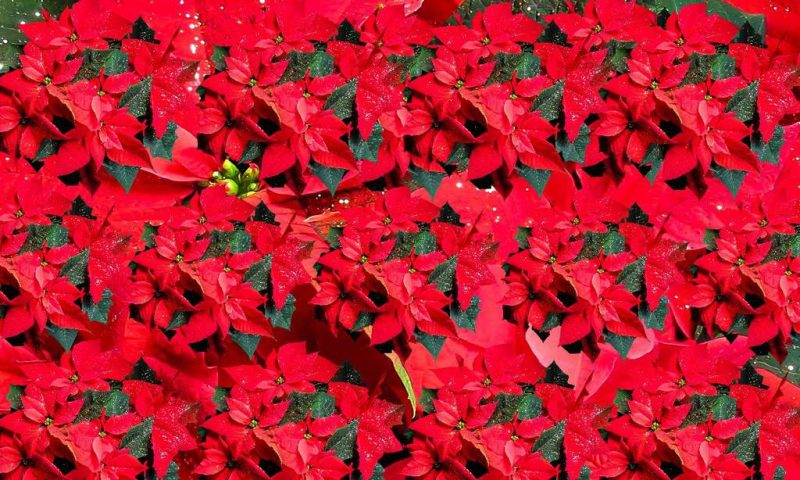You can learn how to propagate poinsettias via seeds and cuttings. And like other plants, you may find it beneficial to start these plants in the greenhouse. This way, you can assure that the young plants will develop without drawbacks due to the consistent indoor conditions.
More so, growing in the greenhouse guarantees quality poinsettias. Learning how to propagate and maintain poinsettias is generally easy, so why not create more plants and enjoy these flowers’ various colors? Gone are the days where you have to buy these flowers because it’s possible to enjoy them in different seasons, not limited to the holidays.

Comprehensive Guide On How To Propagate Poinsettias
Seeds
While it’s not as expected, you can start poinsettias from seeds. The process can be a tad intimidating for some, but a proper understanding of the methods should help you successfully root these plants. More so, you can pollinate them yourself so you can plan when to collect seeds.
Step #1. Seed collection
You can buy poinsettia seeds, but you can also collect ones from your existing plants. Be on the lookout for the seed pods on the stalks of your flowers when poinsettias start to fade. These pods start green, and you can start collecting them once they turn brown.
Much like with other seeds, you want to dry them first in a paper bag. Put the closed bag somewhere dry, and you can start collecting the seeds after some weeks. Most of the time, you don’t need tools to pop the pods open, and you can just use your hands.
However, do note that poinsettia seeds require procedures for them to germinate. If you’re familiar with seed stratification, this is a process that you need to do on the seeds to break dormancy. Place them in the refrigerator for about three months, and you should be ready to plant.
Step #2. Planting
After stratification, you’ll notice how easier it’ll be to pop the pods and remove the seeds. There no unique methods for sowing poinsettia seeds. However, you’ll have an easier time growing them in the greenhouse because the indoor conditions doesn’t fluctuate.
Sow the seeds below the soil around 1.5 inches and maintain the moisture. You can use one poinsettia seed per pot. Place them somewhere warm but not receiving direct sunlight, and the seedlings should appear at two weeks.
Cuttings
Perhaps the more convenient way for some gardeners to propagate poinsettias is by using cuttings. Growing poinsettias from cuttings is a quicker way to create copies of plants. This process doesn’t require any preparatory procedures and will guarantee clones of the parent plant you choose.
Step #1. Prepare cuttings
As with other plants, you want to use a healthy parent plant as the source. Make sure that it is free of any diseases, including the stem you’ll cut. A 6-inch cutting should suffice, and you can do this early in the summer when you notice new growths on the plants.
Prepare the cuttings by removing the lower leaves but leaving those at the top. Dip each cutting in rooting hormone to help with establishment. For the medium, you can use any sterile potting mix and insert the cutting in it.
Step #2. Planting
You can also use the greenhouse for rooting cuttings because it’s easier to manage the indoor conditions. The key to further help with rooting is to cover the container with a plastic bag without it touching the cutting. This will create a humid environment and makes the moisture easier to maintain.
Place the cuttings somewhere warm but out of direct sunlight. Each day, check the cuttings if the medium needs watering. Over time, you can decide if you want to transplant the cuttings outdoors.
You can also keep them in the greenhouse for some time if your outdoor conditions are still not ideal. For outdoors, you can transplant the cuttings in the fall. Make sure you acclimate them first to prevent transplant stress.
Any extreme temperatures will be detrimental to poinsettias that are just establishing themselves.
Watering And Fertilizing Poinsettias
Like with other plants, maintain soil moisture but without risking overwatering your poinsettias. You can water when the surface feels dry, but don’t wait too long because the plants can wilt.
For the fertilizer, you can start feeding poinsettias when they show new stems and leaves. An all-purpose fertilizer would be enough, but make sure to dilute it. Fertilizing every four weeks is ideal for maintenance and plant health.
Conclusion
It’s no secret that seeing poinsettias brings anybody in the holiday spirit. But regardless of the season, learning how to propagate poinsettias can be a useful skill to create more beautiful flowers for your garden. You can sow them from seeds or use cuttings from an existing poinsettia plant.
When growing poinsettias from seeds, you can buy or collect some from your plants when their flowers fade. Store the pods for drying and stratify them to guarantee germination. On the other hand, taking cuttings is straightforward.
Select a healthy parent plant and cut around 6 inches of stem. Remove the lower leaves and dip the cutting in a rooting hormone before planting. Cover the pot with plastic bag to create a humid environment.
In both methods, you can use a greenhouse to guarantee establishment. Poinsettias are sensitive to freezing temperatures, so make sure to check your calendar before transplanting outdoors.
